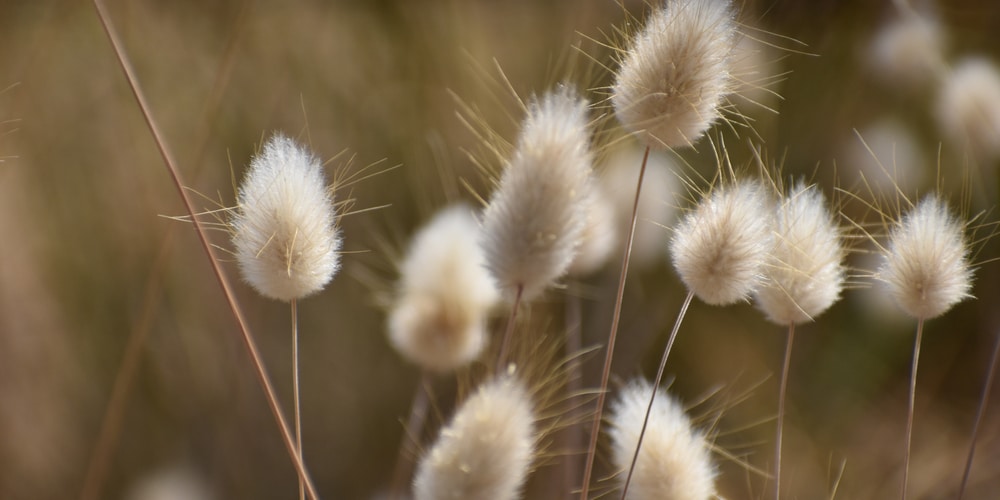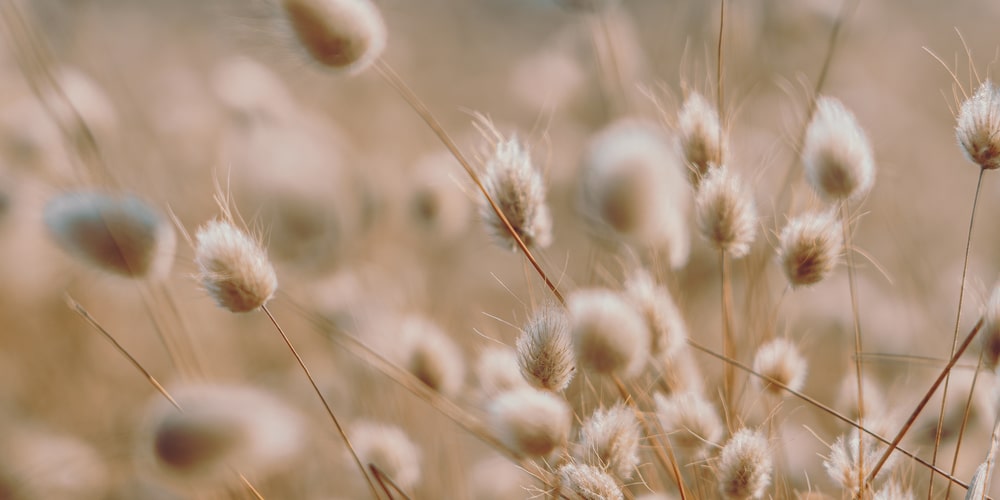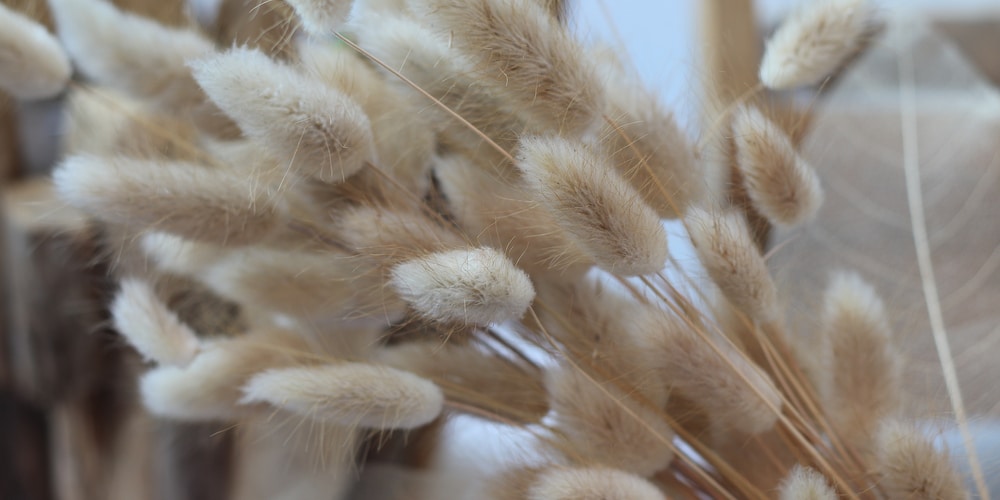Ornamental plants are a way to add an elegant touch to your yard. There are plenty of options you can choose from, but if you live in a hot region and need something that will tolerate warm summer, the bunny tail grass might be one of your best options.
This ornamental produces delicate-looking silvery-green blades with fluffy seed heads (hence the name).
This versatile plant is suitable for residential and commercial landscaping. Its unique looks and soft flowers will add a different texture to the outdoor space. To learn more about caring for this ornamental, read on: you’ll find everything you need to know in this essential guide.
| Botanical Name | Lagurus ovatus |
| Common Name | Bunny Tail Grass |
| Plant Type | It can be a perennial in zones 8-10 and an annual between zones 4 and 7. |
| Flower Color | Creamy white small blooms around two inches in diameter. They make for excellent cut flowers: they can last up to 12 months in a dried flower arrangement! They grow in clusters and are soft and furry. |
| Size When Mature | Around 12-24 inches tall and 10 to 12 inches in width |
| Bloom Time | Early Summer to Fall |
| Sun Requirements | Full Sun |
| USDA Hardiness Zones | Between 8 and 10, but you can grow it as an annual in other zones. |
| Soil PH Range | Neutral: between 6.5 and 7.5 |
| Soil Type | Sandy, loamy, well-draining |
| Water Needs | Low |
| Native Area | Mediterranean |
What you Need to Know About Bunny Tail Grass
Planting bunny tail grass in your garden is an excellent way to take your flower beds to the next level. The plant’s name comes from the spiky but soft creamy flowers: they resemble a rabbit’s tail.
The blooms start pale green, mature into glowing white, and gain a creamy to beige tint at the end of their growth cycle. This plant’s foliage is slender and silver-green.
This small, clumping grass adapts to various soil conditions and doesn’t require much attention, making it a perfect option for beginner gardeners. Its compact growth habit makes it suitable to plant alone on walkways, garden beds, containers, and rock gardens.
And if you have pets or kids running around your garden, don’t worry: this plant isn’t toxic to humans or animals.
How to Care for Bunny Tail Grass
Even if we mentioned that Bunny Tail Grass is a relatively easy-to-care plant, that doesn’t mean it doesn’t require any attention from your side. To get the most out of this ornamental, you should provide what it needs to thrive. Learn more about Bunny Tail Grass’s requirements in the following sections!
Light
This plant does better under the full sun. Plant it somewhere it will receive at least six hours of sun to get the most out of it. Avoid planting your bunny tail grass in the shade, especially if you are starting it from seeds: inadequate lighting will inhibit its growth.
However, don’t forget that a mature plant will tolerate partial shade when well established, provided that you fulfill the rest of the growing requirements.
Water and Soil Needs
Bunny Tail Grass thrives in well-draining loamy or sandy soils. The best part of growing this ornamental is that once you find a suitable location for its growth, you won’t’ have to worry too much about it.
And the plant isn’t particularly fussy about soil conditions: it will perform well in most soil pH, even if it prefers neutral conditions.
This plant will tolerate drought conditions but performs better (and will provide more of its fluffy flowers) with regular watering. Overwatering might cause severe damage, as the plant is susceptible to fungal infections and doesn’t tolerate wet roots.
Provide your plant with one inch of water per week during the spring and the summer. But don’t forget to feel the soil with your finger before adding extra moisture.
Temperature Requirements
Because of its native environment, Bunny Tail Grass prefers warmth to cold. For this reason, it is the perfect plant to plant in USDA hardiness zones between 8 and 10, where it can grow as a perennial.
In other parts of the country, this plant will grow as an annual, as it won’t survive the low winter temperatures.
Fertilizer
Under the optimal growing conditions, bunny tail grass doesn’t require fertilizer. However, if you need something to boost the plant’s growth, you should consider applying a thick layer of compost around its roots.
Doing so will also improve water retention, increase drainage, and regulate the soil temperature. Don’t forget to regularly change the mulch to maintain an ideal nutrient content in the ground.
Common Diseases
Bunny Tail Grass is a hardy plant that doesn’t suffer much from attacks from pests or diseases. The most common problems with this plant involve overwatering: as mentioned before, you should avoid leaving this ornamental in soggy soils.
Failure to do so might make your plant more susceptible to fungal infections such as mildew diseases.
Bunny Tail Grass Propagation
If you want to keep enjoying the beauty of your bunny tail grass, you might be happy to hear that propagating it isn’t as complicated as you may think. The plant tends to self-seed, and you can take seeds from the flowers before they ripen.
Remember to keep them in an air-tight container until the spring arrives. If you live in a cold region, you might have to start your seeds indoors.
The best way to do so is to plant your seeds around eight weeks before the last spring frost. Use containers with adequate drainage holes, and don’t forget to fill them with well-draining potting mix.
Under optimal growing conditions, germination will appear in two to three weeks. Don’t forget to maintain your seedlings at temperatures between 65 and 75°F.
Related Article: Tall Ornamental Grasses For Privacy


